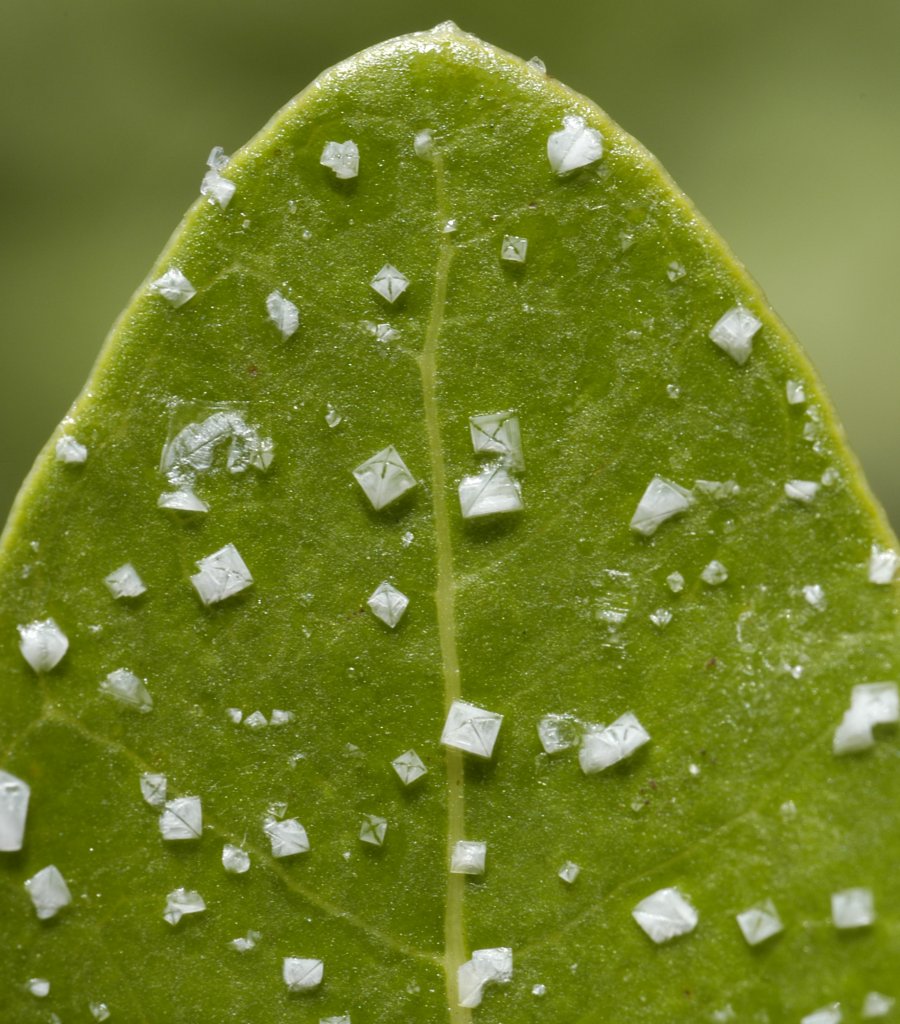There was one factor in the question that seems to have been overlooked in the other answers that may make a gold harvesting plant a little more plausible...
If the plant evolved in an area with significant volcanic activity you may have a reasonable explanation of both why the plant collected valuable minerals/metals and how it would have access to more significant quantities of them.
If your bush looked more like a mangrove and grew in water run off from active geysers/hot-springs, in a place like Yellowstone you may be be able to suspend disbelief enough to make it work.
The reason I'm pointing to the mangrove, and specifically the black mangrove, is the way that it has adapted to living in salt water.
It is a hardy species and expels absorbed salt mainly from its leathery leaves.

 "Avicennia germinans-salt excretion" by Ulf Mehlig - Own work. Licensed under CC BY-SA 2.5 via Wikimedia Commons.
"Avicennia germinans-salt excretion" by Ulf Mehlig - Own work. Licensed under CC BY-SA 2.5 via Wikimedia Commons.
Basically you would have a mangrove like plant, that grows in heavily mineral/metal laden water, that excretes excess mineral/metal build up in nice little crystals on it'sits leaves as a byproduct. The plant doesn't really want or use most of the minerals/metals it just developed a handy way to get rid of them so that it can live in water that is tainted with them. Perhaps the mangrove developed the adaptation in order to have access to a relatively warm microclimate that supports an active microbial ecology to feed off of.
I know this isn't exactly the "berries" that you were looking for, but this scenario may be a bit more believable.
